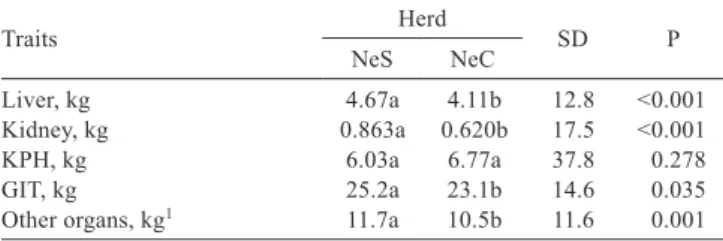Feedlot performance, feed efficiency and carcass traits in Nellore cattle selected for postweaning weight
Texto
Imagem


Documentos relacionados
The CAN animals showed lower ADGc and carcass yield, and had a lower slaughter weight than AN animals (Table 5), although they remained in the feedlot for a longer time.. This
The finishing system had no influence on the weight carcass hot and cold, yield, and losses carcass, but the feedlot animals showed higher fat thickness and better
The inclusion up to 15% of glycerin in the diet of kid goats Boer crossbred, although did not affect feed conversion and performance, compromised the intake and carcass weight..
The level of 0.5% clinoptilolite, in growing and finishing pigs diets did not affect feed intake, daily weight gain, feed conversion, carcass quality, hot carcass weight,
Lambs fed for a longer period, as expected, had higher carcass weight when compared with animals that spent less time in the feedlot however, with lower feed efficiency (Table
The performance variables (weight, weight gain, daily weight gain, feed conversion and feed intake) during the 7 - 42 days period, the fasting weight and the warm carcass weight
We evaluated the performance (feed intake, weight gain and feed conversion ratio), carcass yield and cuts, histomorphometry of the small intestine (height, circumference and width